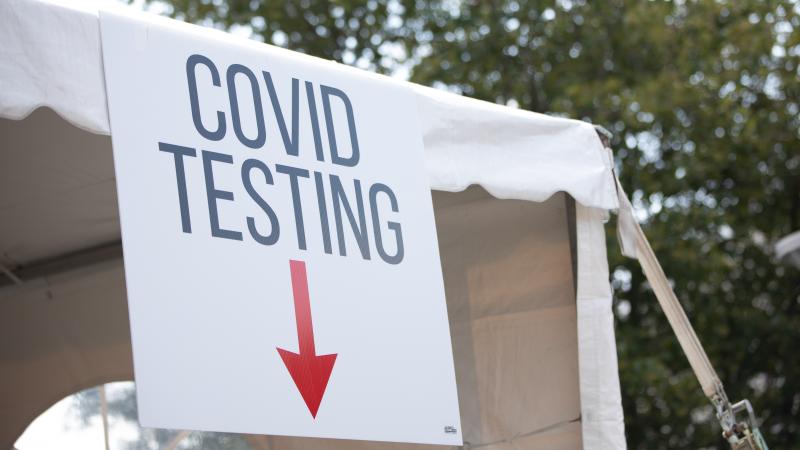Institute leans into its science and technology roots to reopen campus
September 3, 2020

Students at Rensselaer Polytechnic Institute are back on campus for the start of the fall semester due to significant testing and tracing protocols that have been implemented to minimize the risk of COVID-19 transmission, and maximize health and safety.
The return to campus plan is a multifaceted effort that the Rensselaer community worked on for months to research, develop, and execute. It leans on the Institute’s technological expertise and relies on de-densifying the campus, strict social-distancing, masks, and implementing a detailed testing, tracing, and tracking program.
Perhaps the most critical of these pieces is the Institute’s effort to broadly and frequently test for the appearance of COVID-19 infections on campus. The Rensselaer Testing, Tracing, Tracking, Surveillance, and Quarantine/Isolation (T3SQsm) plan requires all students, staff, and faculty who are on campus to be tested regularly. Undergraduate students, for instance, are currently being tested twice a week. In all cases, testing results will be available within 24 hours.
“Contact tracing only works if you are able to identify a positive early on,” said Dr. Leslie Lawrence, the executive director of Student Health Services. “We think that the science says that we should be doing this, even though it’s certainly a heavy lift.”
In determining a testing protocol, the Institute relied on information that the latest studies and models could provide, including models developed by Rensselaer researchers. The science and engineering expertise on campus has also proven to be an invaluable resource, Dr. Lawrence said, as the Institute is able to collect samples on campus that are then tested by a team of Rensselaer scientists.
“We had a lab that could do PCR tests, so we have access to that. Most universities do not,” Dr. Lawrence said. “That was a huge advantage. We also have a group of scientists who are reviewing, reading, and commenting on each one of these studies about COVID as it comes out, so we can talk through each study.”
Dr. Lawrence is leading the testing effort with Jonathan Dordick, an endowed chaired professor of chemical and biological engineering at Rensselaer. Dordick set up a lab along with Elena Paskaleva and Marc Douaisi, senior research scientists at the Rensselaer Heparin Applied Research Center at the Rensselaer Technology Park, to perform RT-qPCR testing. RT-qPCR is a reverse transcriptase polymerase chain reaction that can detect, with exquisite sensitivity and selectivity, the RNA from the virus that causes COVID-19.
According to Dordick, the team has been meeting its goal of returning results within 24 hours so that effective isolation and contact tracing can occur. The testing lab can process over 1,800 samples per day and expects to double this number by later in September.
“We’re using pool testing followed by deconvolution to identify potential positive individuals, which will then lead into our contact tracing program,” Dordick said. “If we get the data within one day, we’re going to stop the vast majority of transmissions. And that’s really our goal, to identify potential positive individuals, initiate contact tracing, and reduce transmission.”
To aid in contact tracing, Rensselaer health and safety protocols require daily reporting by members of the campus community on their health and their interactions. That information will be used to assist Rensselaer Student Health Center staff and Institute contact tracers in their efforts.
“If we have a positive case, the trackers and tracers will work with us to figure out who they’ve had contact with and make some decisions about what’s the next step for them, whether it’s quarantine or isolation,” said Travis Apgar, the assistant vice president for student life and dean of students. “We’ve done extensive work to really plan out which residence halls we use for students to live in, and which residence halls we use for quarantine and isolation, and really coordinating those efforts so we can provide students with a really safe place.”